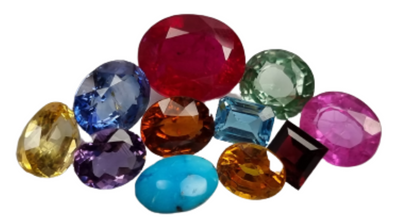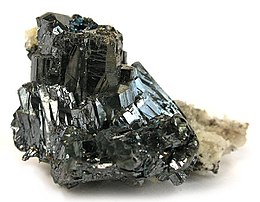Pyrargyrite: Gemstone Information
Pyrargyrite, also known as ruby silver or dark-red silver ore, is a mineral of significant interest and importance due to its striking appearance, historical significance, and role as an ore of silver. This mineral holds a unique place in the world of mineralogy and has been sought after for centuries for its aesthetic beauty and economic value.
Chemical Composition and Structure:
Pyrargyrite is a sulfosalt mineral with the chemical formula Ag3SbS3. Its composition consists of silver, antimony, and sulfur, arranged in a crystal lattice structure. Structurally, it crystallizes in the monoclinic crystal system, forming prismatic crystals or granular masses. Pyrargyrite is renowned for its deep red to nearly black coloration, which is caused by its high silver content.
Physical Properties:
Pyrargyrite exhibits several distinctive physical properties:
Color: Its most notable feature is its deep red to nearly black color, which can appear translucent to opaque depending on the specimen.
Transparency: Pyrargyrite is typically translucent to opaque, with some specimens exhibiting a translucent quality when backlit.
Luster: It has a metallic luster, giving it a shiny appearance when polished.
Hardness: Pyrargyrite has a Mohs hardness of approximately 2.5 to 3, making it relatively soft compared to many other minerals.
Density: The density of pyrargyrite ranges from 5.85 to 6.2 g/cm3, indicating a relatively high density.
Occurrence:
Pyrargyrite is primarily found in hydrothermal veins associated with silver-bearing ore deposits. It often occurs alongside other silver minerals such as proustite, native silver, and argentite. Significant deposits of pyrargyrite have been discovered in various regions around the world, including Mexico, Peru, Bolivia, Germany, and the United States.
Historical Significance:
The deep red color and high silver content of pyrargyrite have made it a sought-after mineral throughout history. Its resemblance to ruby earned it the nickname “ruby silver” and contributed to its popularity as a gemstone substitute in jewelry and ornamental objects, particularly during the Victorian era. However, its primary significance lies in its role as an ore of silver. Pyrargyrite has been mined for centuries as a valuable source of silver, contributing to the wealth of numerous civilizations and economies around the world.
Modern Applications:
While pyrargyrite is no longer as extensively mined for its silver content as it once was, it continues to hold importance in various modern applications. Its striking appearance and historical significance make it a sought-after collector’s mineral and specimen for enthusiasts and museums. Additionally, pyrargyrite still serves as a minor ore of silver, with some mining operations extracting it alongside other silver-bearing minerals. In recent years, pyrargyrite has also gained attention in the fields of mineralogy and crystallography due to its unique crystal structure and chemical composition, contributing to scientific research and understanding in these areas.
Conclusion:
Pyrargyrite, with its deep red color, historical significance, and role as an ore of silver, remains a fascinating mineral with a rich and storied past. From its association with precious metals to its use in jewelry and its enduring allure in the world of mineral collecting, pyrargyrite continues to captivate the imagination of scientists, collectors, and enthusiasts alike.





